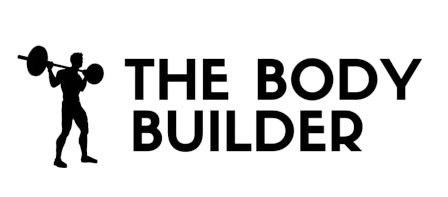Barbell behind-the-back shrug
Benefits Of This Exercise
- The barbell behind-the-back shrug is an effective exercise for targeting the trapezius muscles, which helps to keep the shoulders pulled up and back.
- This exercise is popular amongst those who are looking to build strength and muscle in the upper body, and is often included in shoulder workouts.
- Straps can be used to increase the load, and the exercise is usually done for moderate to high reps, such as 8-10 reps per set.
- The barbell behind-the-back shrug is great for building strength and size in the traps, and can also help to improve posture.
- This exercise hits the upper and mid traps more than a regular shrug, but limits the weight used.
- The barbell behind-the-back shrug also works the shoulders and upper-back muscles secondarily.
- Difficulty can be increased by adding a pause at the top of each rep.
Step by Step Instructions For Barbell behind-the-back shrug
- Stand up straight with your feet at shoulder width as you hold a barbell with both hands behind your back using a pronated grip (palms facing back). Tip: Your hands should be a little wider than shoulder width apart. You can use wrist wraps for this exercise for better grip. This will be your starting position.
- Raise your shoulders up as far as you can go as you breathe out and hold the contraction for a second. Tip: Refrain from trying to lift the barbell by using your biceps. The arms should remain stretched out at all times.
- Slowly return to the starting position as you breathe in.
- Repeat for the recommended amount of repetitions.
Variations: You can also rotate your shoulders as you go up, going in a semicircular motion from rear to front. However this version is not good for people with shoulder problems. In addition, this exercise can be performed with the barbell in front of your thighs, with dumbbells by the side, a smith machine or with a shrug machine.
Warm Up Tips
- Start by standing up straight with your feet at shoulder width apart.
- Hold a barbell with both hands behind your back using a pronated grip (palms facing back). Your hands should be slightly wider than shoulder width apart.
- Use wrist wraps for better grip if needed.
- Raise your shoulders up as far as you can go while breathing out.
- Hold the contraction for a second, making sure not to use your biceps to lift the barbell.
- Slowly return to the starting position while breathing in.
- Repeat for the recommended number of repetitions.
Variations:
- Rotate your shoulders as you go up, moving in a semicircular motion from rear to front. Note that this variation may not be suitable for individuals with shoulder problems.
- Perform the exercise with the barbell in front of your thighs, with dumbbells by your side, a smith machine, or with a shrug machine.
The barbell behind-the-back shrug is an excellent exercise for targeting the trapezius muscles. It helps to keep the shoulders pulled up and back, improving posture and preventing rounding forward. Incorporate this exercise into your shoulder workouts to build strength and muscle in the upper body. Use straps to increase the load if desired, but
Barbell behind-the-back shrug Safety Tips
- Ensure that your feet are shoulder-width apart and that you have a firm grip on the barbell with both hands behind your back.
- Avoid using your biceps to lift the barbell and keep your arms stretched out at all times.
- Exhale as you raise your shoulders up as far as you can go and hold the contraction for a second.
- Inhale as you slowly return to the starting position.
- Repeat the exercise for the recommended number of repetitions.
- If you have shoulder problems, avoid rotating your shoulders in a semicircular motion from rear to front.
- Consider using wrist wraps for better grip during the exercise.
- Experiment with variations of the exercise, such as using dumbbells, a smith machine, or a shrug machine.
- If using straps to increase the load, ensure that you are performing moderate to high reps per set.
- Focus on maintaining proper form and technique throughout the exercise.
- Listen to your body and stop the exercise if you experience any pain or discomfort.
- Consult with a fitness professional or trainer if you are unsure about proper form or if you have any concerns or limitations.
- Remember to incorporate this exercise into a well-rounded strength and conditioning program for optimal results.

